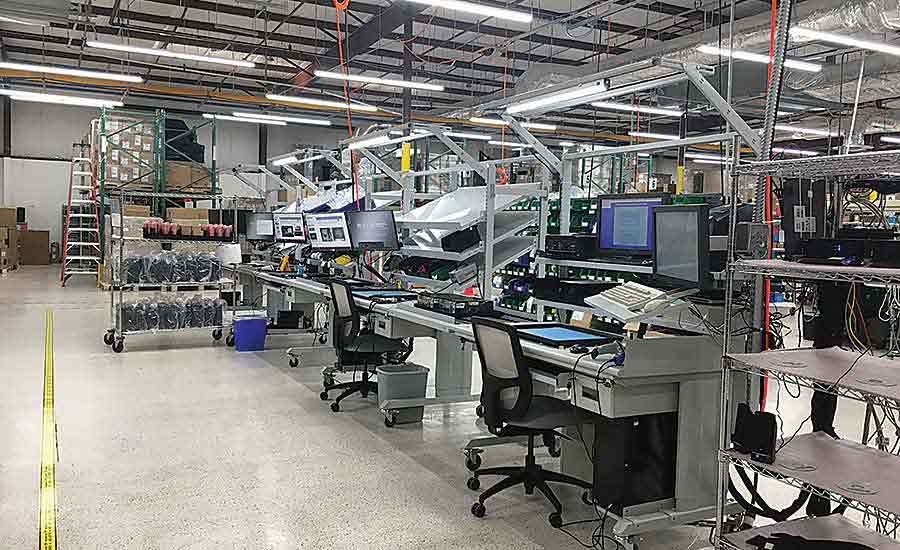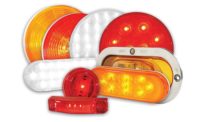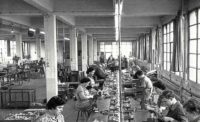Looking for stuff—whether it be keys, wallet, phone, meeting notes, spices in a kitchen cabinet, or pencils in my woodworking shop—is the bane of my existence. Some days, I feel as if I spend more time looking for stuff than I do actually using the stuff I was looking for. It’s a problem.
Of course, I’m not alone in that regard. Manufacturers large and small grapple with that problem on a daily basis. “Looking for stuff” is a form of wasted motion, one of the seven wastes of lean manufacturing, and preventing it is one of the goals behind 5S programs.
Thus, engineers strive to design workstations to minimize wasted motion, which refers to any unnecessary time and effort required to assemble or test a product. Excessive twists or turns, uncomfortable reaches or pickups, and unnecessary walking all contribute to wasted motion. Tools, parts and other items needed to accomplish a task should be within easy reach. Work instructions and displays should be presented so technicians can easily see them.
Fortunately, workstation suppliers offer a variety of workstations and accessories to help engineers meet that goal. And, as the following reports show, manufacturers are taking full advantage of them.
Cabinets Keep Automotive Supplier Rolling
TREMEC (Transmisiones y Equipos Mecanicos) manufactures automobile transmissions and drivetrain components. The company’s transmissions can be found in products ranging from supercars and high-performance sports cars to severe duty, vocational and commercial vehicles worldwide. The company’s portfolio of products includes manual transmissions, dual-clutch transmissions, and hybrid and electric vehicle drivetrain products.
The company has a sales, marketing and engineering office in Wixom, MI. It also production facilities in Pedro Escobedo, Mexico, Santiago de Querétaro, Mexico, and Zedelgem, Belgium.
Recently, the assembly plant in Querétaro had a problem. There was no room to expand and yet more space was needed in the tool crib and machine shop. The plant needed to replace inefficient open shelving, which housed items stored in boxes and steel bins; improve organization and inventory and parts tracking; and make maximum use of limited square footage.
TREMEC turned to Lista International Corp. for space-efficient tooling storage and workspace equipment. TREMEC purchased shallow depth HS drawer storage cabinets and added countertops to create multipurpose, highly organized storage of CNC tools, components, extensions and tool clamps. A Storage Wall system with vertical drawers is now home to TREMEC’s massive broach tools.
The latter offers a variety of drawers and roll-out trays to store a range of items. With 100 percent full extension, the drawers and trays allow easy access to stored items. Both the drawers and trays can hold up to 440 pounds each. Wide-span beams, designed for large bulk items, hold up to 1,500 pounds and are available with a variety of decking, including steel and wire. The system can be designed to include a countertop and a 12-inch deep, recessed bookcase.
Mobile CNC tool transporters safely store expensive cutting tools while allowing employees to easily move tools from a staging area to the machining center. Available in a variety of sizes, heights and drawer configurations, transporters are equipped with frames and tool holders to accommodate a variety of standard CNC tool holders. The modular design of the cabinets allows the drawers and roll-out trays, which each have a 440-pound load capacity, to be easily reconfigured for changing needs. Lockable doors on the cabinets protect valuable tools.
The transporters feature a rigid steel frame and steel sheet side panels slotted at 1-inch intervals to accommodate trays, frames, shelves and other accessories. Each transporter has a 2,400 pound capacity. Fully loaded transporters can be safely and securely moved by forklift.
Molded from impact- and oil-resistant ABS, the tool holders accommodate a wide range of straight and tapered shank tools.
“Lista worked closely with us to provide a complete storage and workspace solution that included modular drawer cabinets, Storage Wall systems, CNC tool transporters and workbenches,” says Javier Carbajal, tool and maintenance manager for TREMEC. “We’ve made the workspace substantially more user-friendly. We’ve also gained a new sense of organization, which translates to increased productivity.”
Suspended Automation
Rockwell Automation, makers of motion control and automation products, recently came to IAC Industries to upgrade its assembly plant in Mequon, WI. Although Rockwell has been using IAC benches throughout the facility for more than two years, one of its manufacturing divisions was about to launch a new product that would require upgrading the assembly line.
Engineers Paul Krause and Matt Garrison were in charge of the new product line, which involved assembling, testing and packaging of operator interface modules for Rockwell’s drive units. The assembly line was currently equipped with individual workstations where parts were assembled and placed on a pallet, ready to be picked up for testing. After products passed testing, they were sent to packaging. This process required additional workers to pick up assembled products and walk them over to a separate work area for automated testing.
Krause and Garrison were looking to integrate the assembly and test portions of the manufacturing process. Their objectives were to reduce material handling by workers and to streamline the process by reducing work in process. The Rockwell engineers decided to purchase new benches and install some type of automated conveyor that would help consolidate the line.
After some research, the engineers concluded that their material handling options were either a gravity-feed conveyor or a pallet-transfer conveyor. Then they contacted Assembly Resources Inc., IAC’s distributor for Illinois and Wisconsin, for help.
The engineers knew they were looking for a bench that would allow a suspended conveyor belt to pass either next to or above the assembly line. The conveyor would need to be as close to the benches as possible.
Schmidt recommended installing IAC Industries’ D4 workstations with uprights that would allow a conveyor to pass directly next to the work surface (through the uprights). The unique two-piece construction of the D4 uprights allowed the engineers to successfully integrate the assembly and test stations with one, continuously operating chain conveyor from FlexLink Systems Inc.
This was accomplished by using custom D4 benches and creating an opening in the upright for the conveyor to pass through. Electrical outlets were incorporated in the top of the D4 uprights to accommodate the opening. IAC’s standard 36-inch D4 bench was also customized to 12 inches in depth to reduce the space between the assembly line and individual work surfaces. Conveyor pallets are only 12 inches from operator.
The custom D4 workstations were finished to aesthetically complement other D4 benches previously installed in the facility. The new floor plan and D4 workstations eliminated the need for workers to carry parts from assembly to test, subsequently reducing the required manpower by one man per shift. Now, the chain conveyor brings lightweight parts through the custom D4 workstations in assembly where the operator interface modules are assembled.
Once assembled, the modules are placed back onto pallets hanging from the chain conveyor, which are then transported to an unmanned test station, where they are tested and inspected via a machine vision system.
“IAC was the only bench company that could come up with a finished product to meet our needs,” says Krause. “IAC provided a nice shallow solution from the back of the upright to the bench, and that solved our conveyor challenge.”
Electronics Assembler Gets Lean
Based in Melbourne, FL, Contec Americas Inc. makes computers, gateways, controllers and other electronic hardware for industrial automation, medical devices and government and security equipment.
Contec’s business has been growing rapidly since 1991. To keep pace with demand, the company wanted to create a lean, single-piece flow assembly line. The line needed to be reconfigurable to adapt to changing needs, and workstations and other equipment had to be static-dissipative to protect sensitive electronics.
Contec turned to Treston Inc. for help. Treston developed four separate assembly lines equipped with Concept workstations connected by MultiLine conveyors. Each line consists of two assembly stations, two test stations, a quality control station and a packing station. With the connecting conveyors and ball transfer tops, product could move from assembly to packing smoothly and efficiently. All the materials and tools needed for each operation are easily accessible above each workstation.
After installing the new lines, Contec has seen a drastic improvement in production. Lead times are now 30 percent faster. Inventory has been reduced by 3 percent. The new lines are 29 percent more efficient and use only half of the floor space of the old assembly lines.
Contec employees are enjoying the ergonomics of the new lines and the single-piece flow.
“The best thing about working with Treston has been the quality of their products, their customer service, and the ability to configure the products to our business needs,” says Linda Craig, Contec’s director of operations.








